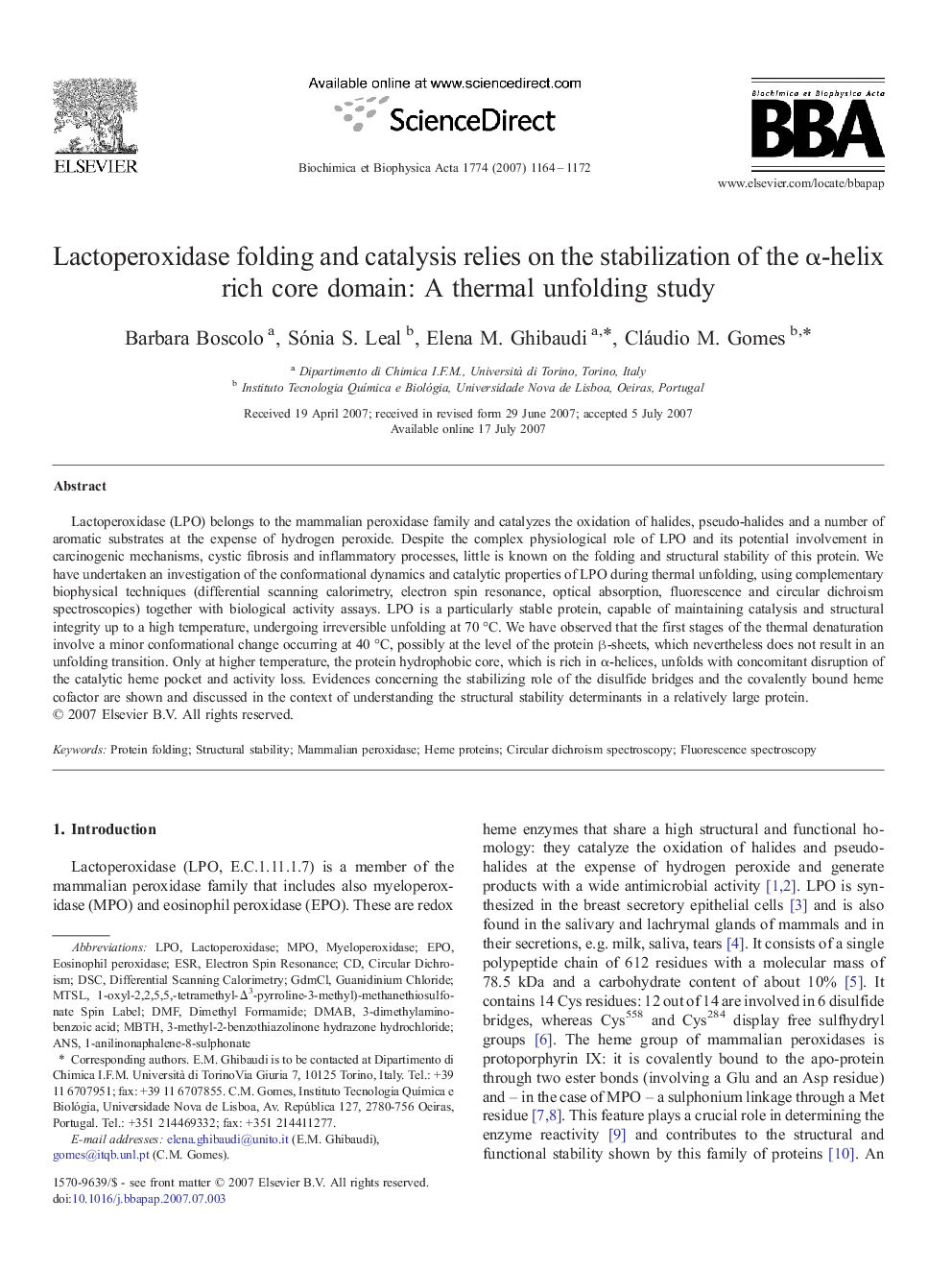| Article ID | Journal | Published Year | Pages | File Type |
|---|---|---|---|---|
| 1179143 | Biochimica et Biophysica Acta (BBA) - Proteins and Proteomics | 2007 | 9 Pages |
Lactoperoxidase (LPO) belongs to the mammalian peroxidase family and catalyzes the oxidation of halides, pseudo-halides and a number of aromatic substrates at the expense of hydrogen peroxide. Despite the complex physiological role of LPO and its potential involvement in carcinogenic mechanisms, cystic fibrosis and inflammatory processes, little is known on the folding and structural stability of this protein. We have undertaken an investigation of the conformational dynamics and catalytic properties of LPO during thermal unfolding, using complementary biophysical techniques (differential scanning calorimetry, electron spin resonance, optical absorption, fluorescence and circular dichroism spectroscopies) together with biological activity assays. LPO is a particularly stable protein, capable of maintaining catalysis and structural integrity up to a high temperature, undergoing irreversible unfolding at 70 °C. We have observed that the first stages of the thermal denaturation involve a minor conformational change occurring at 40 °C, possibly at the level of the protein β-sheets, which nevertheless does not result in an unfolding transition. Only at higher temperature, the protein hydrophobic core, which is rich in α-helices, unfolds with concomitant disruption of the catalytic heme pocket and activity loss. Evidences concerning the stabilizing role of the disulfide bridges and the covalently bound heme cofactor are shown and discussed in the context of understanding the structural stability determinants in a relatively large protein.
